Welcome to the joyous world of balcony gardening, where even the smallest urban spaces can become lush retreats brimming with life! Whether you’re just starting your gardening journey or have years of experience under your belt, this guide to the best plants for apartment balconies is your passport to creating a vibrant oasis right outside your door. With the right selection of greenery, you can transform your outdoor space into a haven of tranquility and beauty, regardless of how limited it might seem.
This carefully curated list of plants is designed to thrive in balcony conditions, offering both visual appeal and practical benefits. From improving air quality to providing a sense of accomplishment, the rewards of nurturing these plants are endless, and you’ll find that gardening is not only a hobby but a source of daily joy. Dive into this guide with confidence, knowing that each plant has been chosen for its resilience and adaptability, ensuring your success as you cultivate your own piece of paradise.
Compact Herb Garden Kits (Space-Saving Solutions)
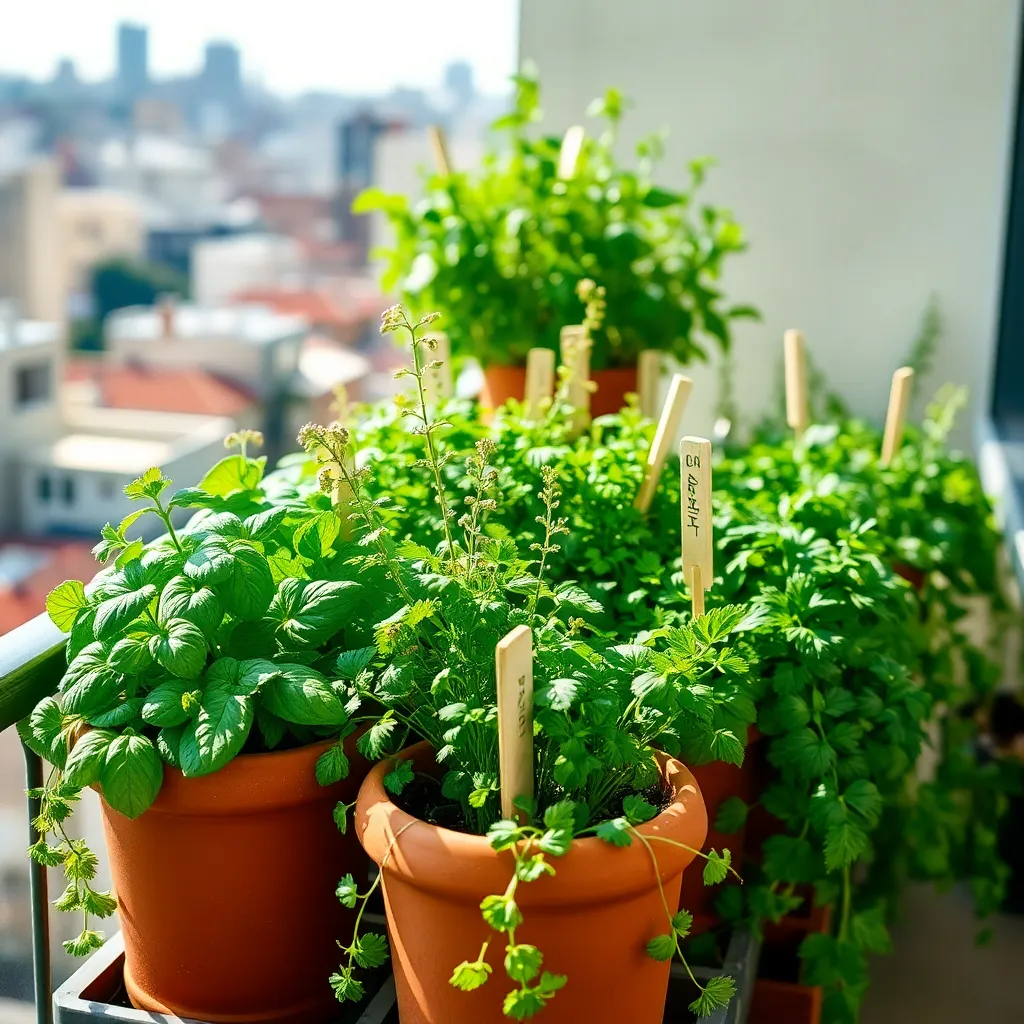
Compact herb garden kits are a fantastic solution for those with limited space on apartment balconies. These kits often include everything you need to start growing, from containers and soil to seeds of popular herbs like basil, mint, and parsley.
When setting up your herb garden, choose a location that receives at least six hours of sunlight per day. If your balcony doesn’t get enough natural light, consider using LED grow lights to supplement the sunlight.
Watering is crucial, but it’s important not to overdo it. Ensure your containers have adequate drainage, and water your herbs only when the top inch of soil feels dry to the touch.
For those looking to take their herb garden to the next level, consider experimenting with vertical gardening. Use stackable planters or hanging pots to maximize your space, and select herbs with similar water and light requirements to plant together.
Herbs thrive in well-draining soil, so use a potting mix specifically designed for container gardening. Adding a layer of small pebbles at the bottom of your pots can further enhance drainage and prevent root rot.
Regularly harvesting your herbs encourages growth and keeps plants healthy. Snip leaves and stems with clean scissors, making sure to leave enough foliage for the plant to continue thriving.
Self-Watering Planters (Low-Maintenance Design)
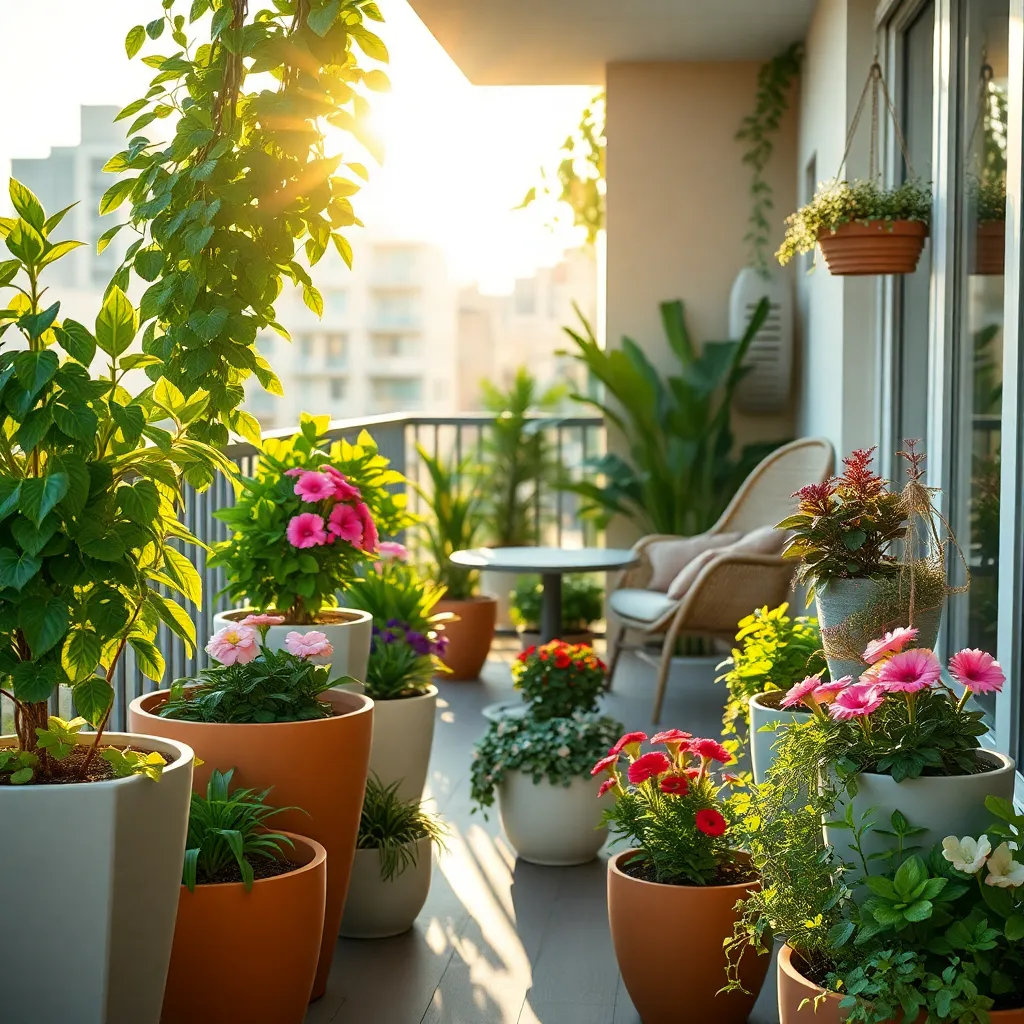
Self-watering planters offer a fantastic solution for busy apartment dwellers who still want lush greenery. These planters feature a reservoir system that delivers water directly to the plant’s roots, reducing the need for frequent watering.
To set up a self-watering planter, start by filling the reservoir with water and ensure the wicking system is working properly. Regularly check and refill the reservoir every one to two weeks, depending on the plant and season, to keep your plants hydrated without overwatering.
For best results, use a lightweight potting mix specifically designed for containers, which allows for adequate drainage and aeration. This setup is ideal for moisture-loving plants like ferns, peace lilies, or even herbs such as basil and mint that thrive with consistent moisture.
Advanced gardeners can enhance the efficiency of self-watering planters by adding a layer of mulch on top of the soil. This helps to retain moisture and reduce the frequency of refilling the reservoir, particularly during hot summer months.
Vertical Wall Planters (Maximize Limited Space)
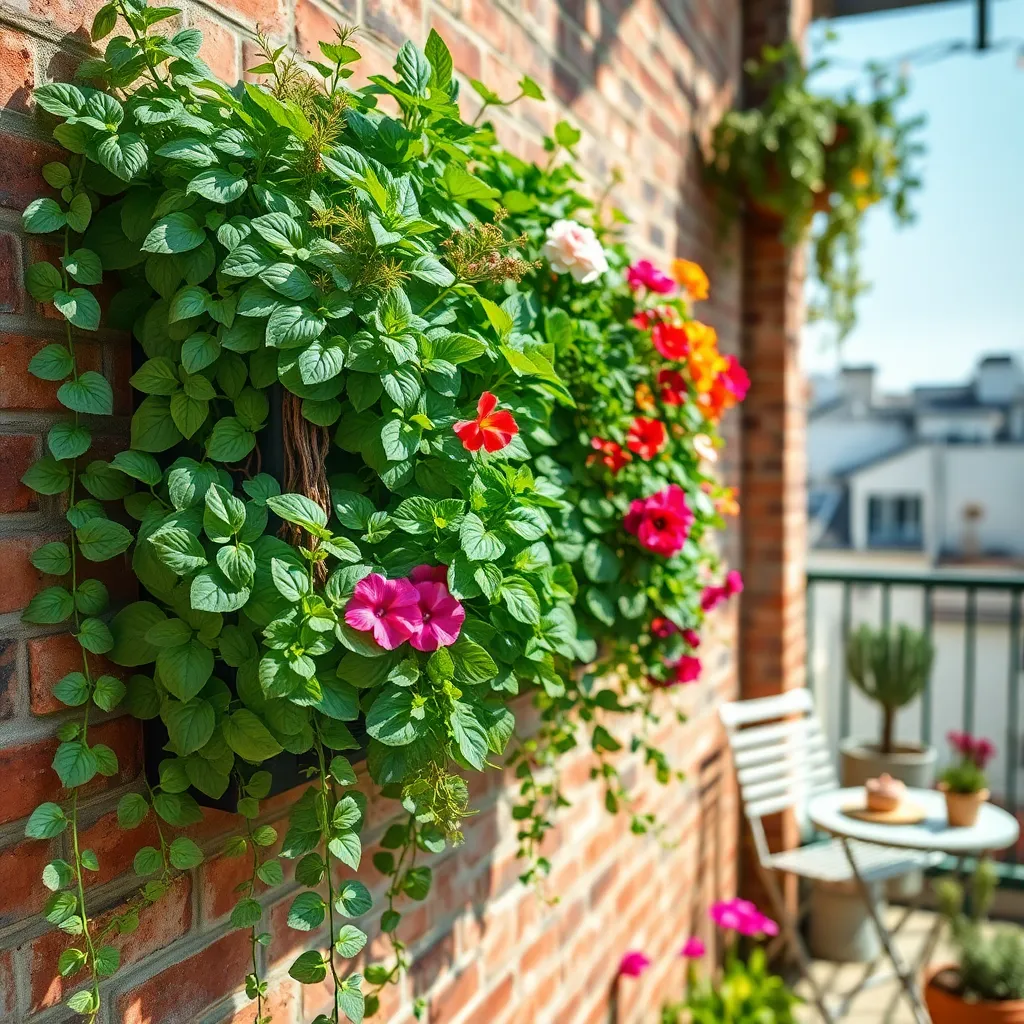
Vertical wall planters are a fantastic solution for maximizing limited space on apartment balconies. They allow you to create a lush, green oasis without sacrificing your precious floor space.
When selecting plants for your vertical garden, consider species such as ferns, ivy, and succulents. These plants are not only visually appealing but also thrive in the confined vertical environment.
Ensure that your wall planters have good drainage to prevent waterlogging, which can be a common issue in confined spaces. Use a well-draining soil mix, such as a blend of potting soil and perlite, to keep your plants healthy.
Water your vertical planters regularly but avoid overwatering, as water can accumulate and damage roots. A general rule of thumb is to water when the top inch of soil feels dry to the touch, but this may vary depending on your plant selection.
- Advanced Tip: Consider installing a drip irrigation system to maintain consistent moisture levels, especially during hot months.
- Beginner Tip: Start with hardy plants that require minimal care, like pothos or spider plants, to gain confidence in vertical gardening.
Dwarf Citrus Trees (Fragrant and Fruity Appeal)
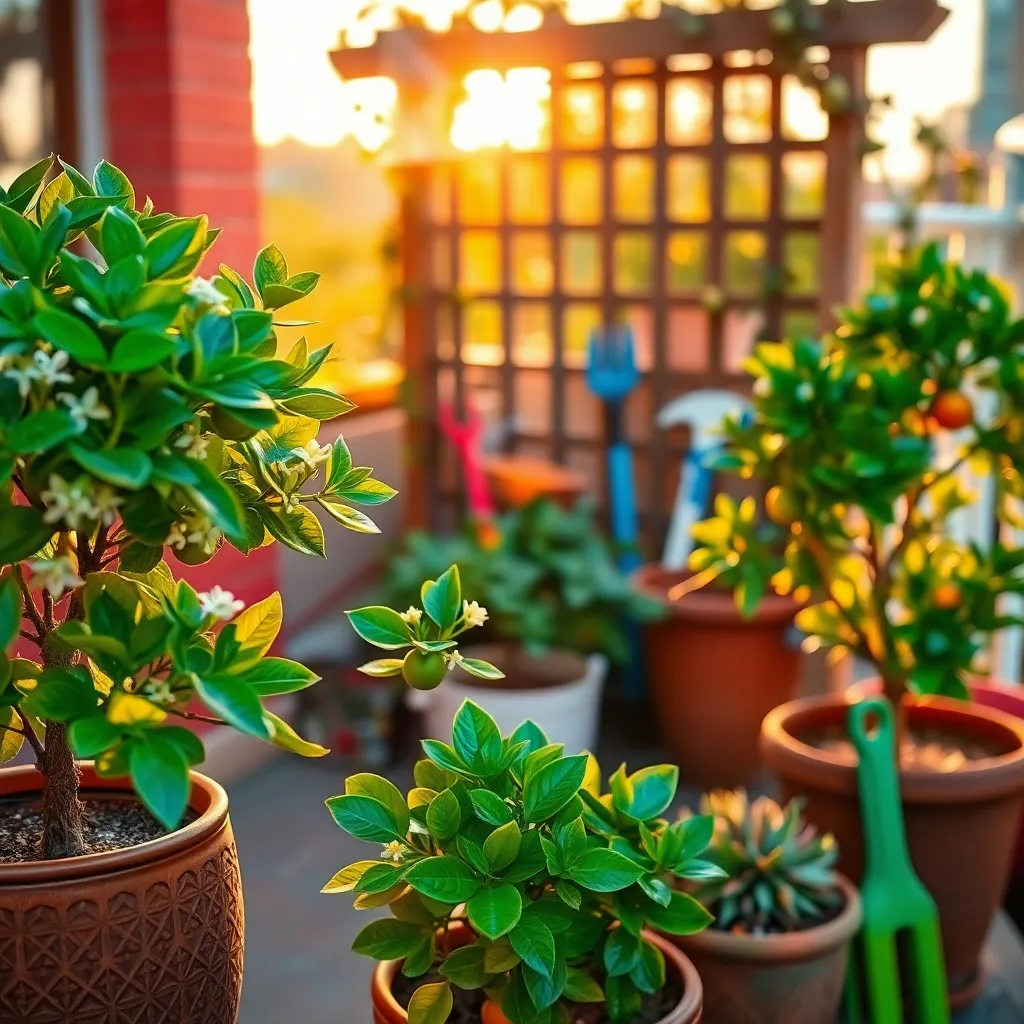
Dwarf citrus trees are an excellent choice for apartment balconies, offering both fragrance and flavor in a compact form. These trees are ideal for small spaces, as they thrive in pots and can be easily moved to catch the sun throughout the day.
To ensure healthy growth, use a well-draining potting mix specifically formulated for citrus plants. This type of soil prevents root rot and provides the necessary nutrients to support vibrant foliage and fruit production.
Place your tree in a sunny spot, ideally where it can receive at least six hours of direct sunlight daily. If natural light is limited, consider supplementing with grow lights to mimic the sun’s rays and promote healthy photosynthesis.
Watering is crucial; keep the soil evenly moist but avoid letting it become soggy. A simple rule of thumb is to water when the top inch of soil feels dry, and during hotter months, be prepared to increase the frequency.
For those looking to enhance fruit production, fertilize every six to eight weeks with a citrus-specific fertilizer. This ensures your plant receives the right balance of nutrients to support flowering and fruiting, providing you with a bountiful harvest.
Pruning is essential to maintain a manageable size and encourage a bushier growth habit. Trim back any leggy branches or dead wood, and aim to shape the tree for both aesthetic appeal and improved air circulation.
Shade-Tolerant Ferns (Lush Greenery for Low Light)
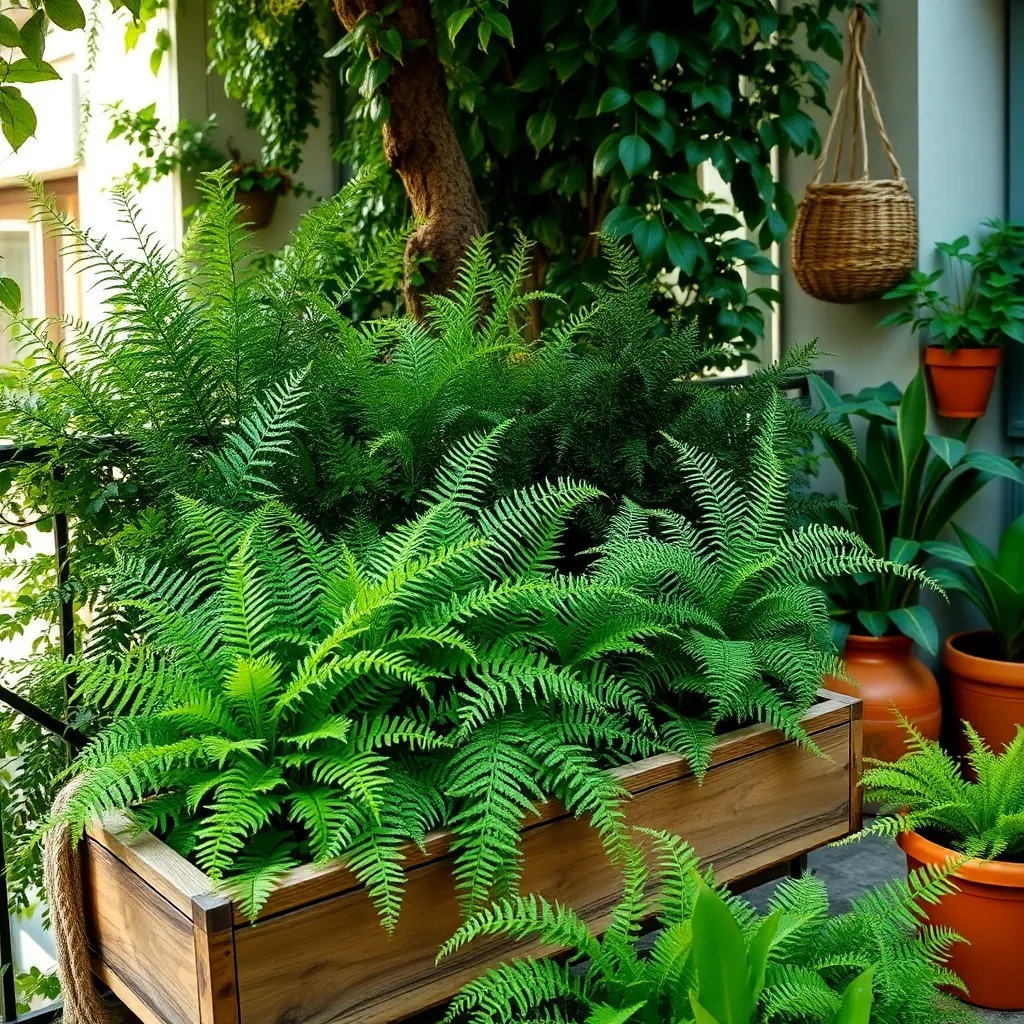
Bringing a touch of the forest floor to your apartment balcony is easy with shade-tolerant ferns. These lush plants thrive in low-light conditions, making them ideal for spaces that don’t receive direct sunlight. Boston ferns and maidenhair ferns are excellent choices due to their adaptability and elegance.
Ferns prefer a moist environment, so ensure their soil is consistently damp but not waterlogged. Using a potting mix rich in organic matter will help retain moisture and provide the nutrients these plants need. Consider a soil blend with peat moss or coco coir for optimal moisture retention.
Watering frequency depends on the climate, but generally, ferns require watering about twice a week. Check the soil’s top layer and water when it feels dry to the touch. For advanced care, periodically mist your ferns to replicate their natural humid conditions, especially in dry indoor environments.
For those looking to go a step further, consider incorporating a slow-release fertilizer every few months during the growing season. This will help promote lush growth and vibrant green foliage. Regular pruning of dead or yellowing fronds will also encourage healthy new growth and keep your fern looking its best.
Conclusion: Growing Success with These Plants
In exploring the best plants for apartment balconies, we’ve uncovered five key principles that reflect the nurturing nature of relationships: choosing the right “partner” for your space, understanding individual needs for growth, the importance of regular “communication” through care and attention, adapting to environmental changes, and celebrating the beauty of diversity. Each plant, much like a relationship, thrives when these elements are in harmony.
Now, empowered with this knowledge, take a moment to envision your balcony as a vibrant extension of your living space. Head to your local nursery or an online plant store and select a plant that resonates with you, symbolizing a fresh start or strengthening bond in your life.
Bookmark this article as a reliable guide to revisit whenever you’re seeking inspiration or a reminder of the delicate balance in both plant care and relationships. As you foster these green companions, let them serve as a daily reminder that with patience, care, and attention, both plants and relationships can flourish. Embrace this journey with optimism and watch your efforts bloom into lasting success.
